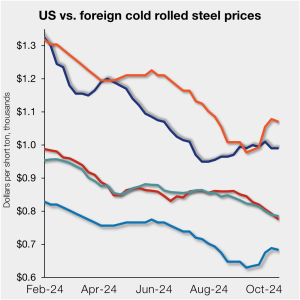
US CR prices hold, imports slip
The price spread between US-produced cold-rolled (CR) coil and offshore products was negligibly wider in the week ended Oct. 18, on a landed basis.

The price spread between US-produced cold-rolled (CR) coil and offshore products was negligibly wider in the week ended Oct. 18, on a landed basis.

The volume of finished steel entering the US market declined in August from July, according to SMU’s analysis of data from the US Department of Commerce and the American Iron and Steel Institute (AISI). Referred to as ‘apparent steel supply,’ we calculate this monthly rate by combining domestic steel mill shipments and finished US steel imports and deducting total US steel exports.
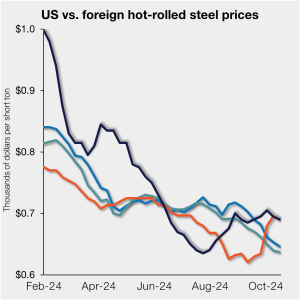
US hot-rolled (HR) coil prices slipped again this past week, mirroring movement in offshore markets. This kept domestic tags marginally higher than imports on a landed basis.
The Global Forum on Steel Excess Capacity (GFSEC) reaffirmed on Oct. 8 what domestic steel producers have long known—the threat of excess steel capacity never disappeared and is evolving. China’s steelmakers are boosting capacity and exports, echoing the 2016 global steel crisis. There is no doubt that China is successfully weaponizing excess capacity across many industries, and the fatal damage to domestic production and national security undermines the interests of all market-oriented countries. The question now is: How will GFSEC countries respond?
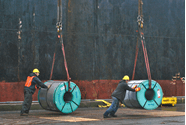
August steel imports totaled 2.38 million short tons (st) according to final data released this week by the US Commerce Departmen
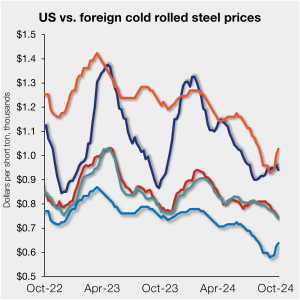
The price gap between US-produced cold-rolled (CR) coil and offshore products narrowed slightly again in the week ended Oct. 11, mainly due to a stateside price cut.
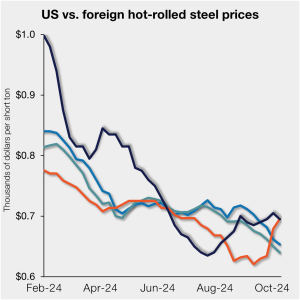
US hot-rolled (HR) coil prices slipped this past week but remain marginally higher than offshore material on a landed basis.
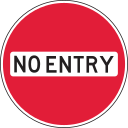
The US has banned imports from a subsidiary of the world’s largest steelmaker because it is allegedly using forced labor to produce steel products.
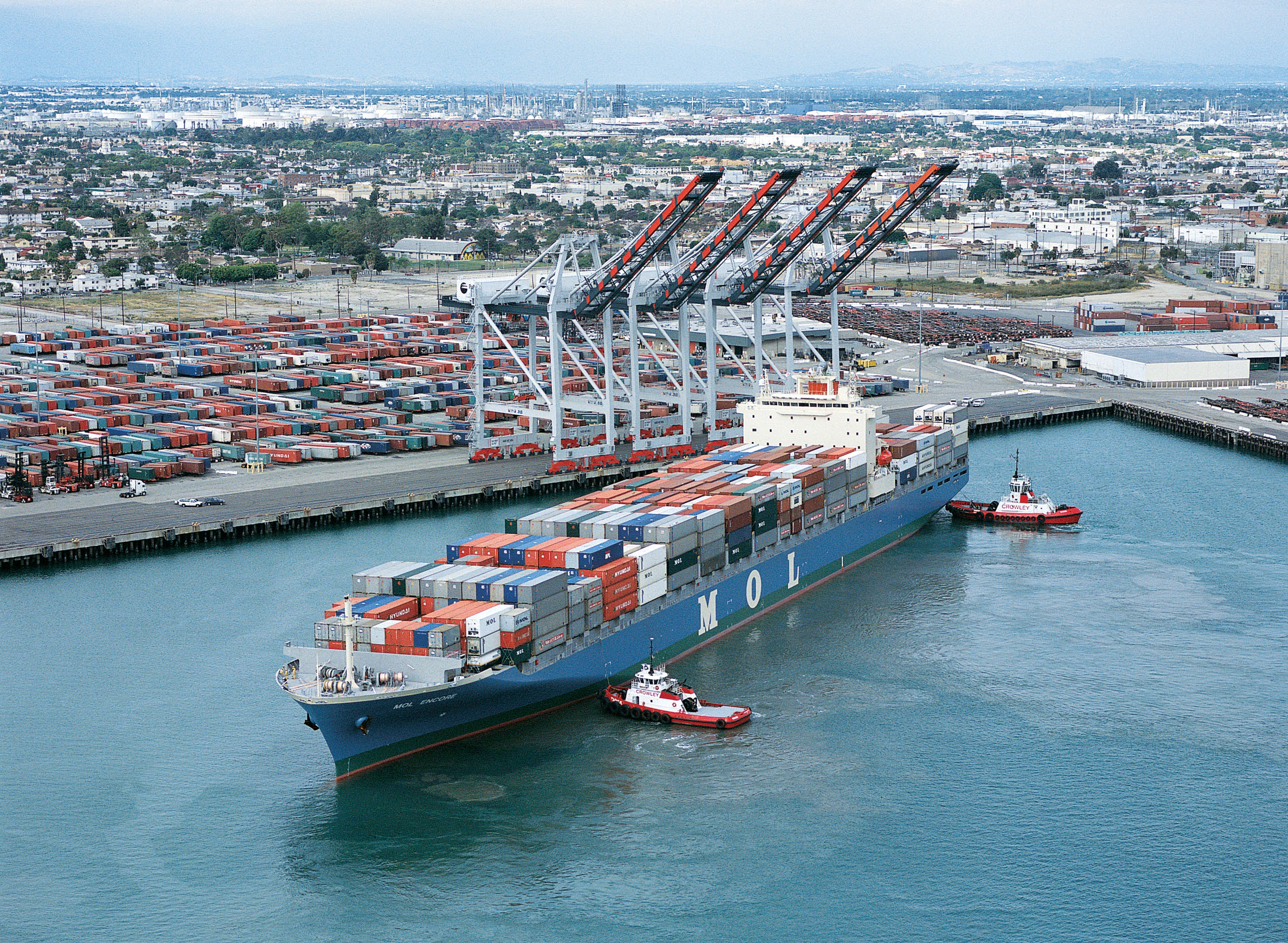
On Thursday, the International Longshoremen’s Association (ILA) and the US Maritime Alliance (USMX), representing carriers and port operators on the East and Gulf Coasts, announced a three-and-a-half-month extension of the recently expired collective bargaining agreement. The extension kicks the can down the road until Jan. 15, 2025, after the 2024 election and the certification of the results on Jan. 6.

The price gap between US-produced cold-rolled (CR) coil and offshore products narrowed slightly in the week ended Oct. 4, mainly due to a price jump in Asian markets.

The International Longshoreman's Association (ILA) union and the United States Maritime Alliance (USMX) reached a tentative agreement on wages on Thursday evening. The move ends a strike at East Coast and Gulf Coast ports that began on Tuesday and that had threatened significant supply-chain disruptions.
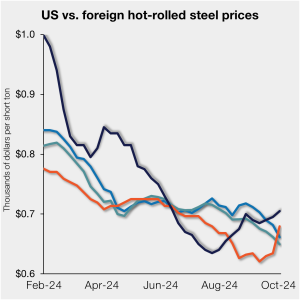
US hot-rolled (HR) coil prices moved slightly higher again this past week but remain marginally higher than offshore material on a landed basis. Since reaching parity with import prices in late August, domestic prices have been slowly pulling ahead of imports. This has been driven by a slight deviation in price movements – slow but […]

Join SMU’s next Community Chat webinar with Barry Zekelman, executive chairman and CEO of Zekelman Industries – the largest independent steel pipe and tube manufacturer in North America. The webinar will be on Wednesday, Oct. 16, at 11 a.m. ET. It’s free to attend. A recording will be available only to SMU subscribers.

The International Longshoremen’s Association (ILA) launched a strike just after midnight on Tuesday at East Coast and Gulf Coast ports. The work stoppage spans from New England to New Orleans. It came after a last-ditch offer by the United States Maritime Alliance (USMX), which represents maritime employers, failed to meet union demands.
By most accounts, the issues that are most important for voters in this election are the economy, immigration, and abortion. International trade policy plays a key role in at least two of those three (the economy and immigration). Both presidential candidates recognize that trade and tariffs are an important focus. And “America first” is a rallying point for both candidates.
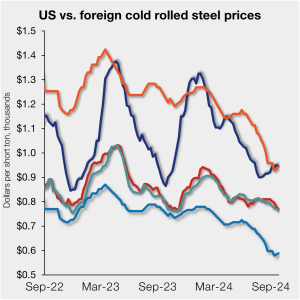
The price gap between US cold-rolled (CR) coil and offshore product has shrunk slightly this week ended Sept. 27 as stateside tags edged down. The premium slipped moderately but remains well ahead of the 10-month low from late July.
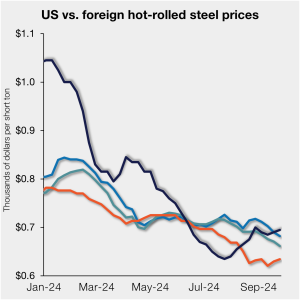
US hot-rolled (HR) coil prices inched up again this past week but remain just a touch more expensive than offshore material on a landed basis.
Barry Zekelman, chairman and CEO of Zekelman Industries, says the import data unquestionably supports the fact that imports of Mexican conduit have been surging into the US market.
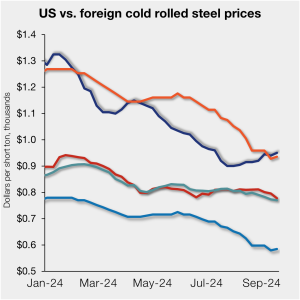
The price gap between US cold-rolled (CR) coil and offshore product widened this week as stateside tags inched up. The premium has been steadily increasing after falling to a 10-month low in late July.
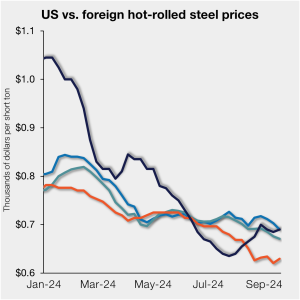
US hot-rolled (HR) coil prices edged up this past week and remain modestly more expensive than offshore material on a landed basis. Since reaching parity with import prices in late August, domestic prices have been slowly pulling ahead of imports. The move has been driven largely by declines overseas.

The only way to achieve net zero goals worldwide is to significantly reduce the greenhouse gas emissions of the global steel industry. And emissions standards can play a key role in encouraging (or discouraging) steel decarbonization. In that spirit, earlier this year, the Biden administration established a climate and trade task force, aimed at a promoting “a global trading system that slashes pollution, creates a fair and level playing field, protects against carbon dumping, {and} supports good manufacturing jobs and economic opportunity.” These are ambitious and laudable goals. Across sectors, the United States has a significant carbon advantage over many of its economic competitors. This is certainly true in the steel industry, where American manufacturers are among the lowest emitting in the world. In other words, when it comes to steel, climate-focused trade policy can go hand-in-hand with US competitiveness.
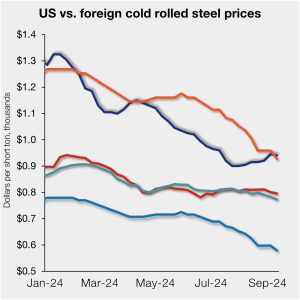
The price gap between US cold-rolled (CR) coil and offshore product is a bit broader this week despite slightly lower tags stateside. The premium is still widening since falling to a 10-month low in late July.
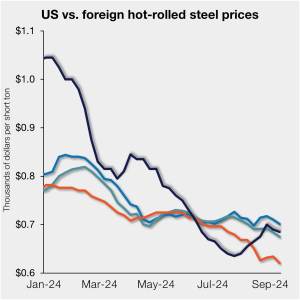
US hot-rolled (HR) coil prices edged down slightly this past week but remain at a slight premium to offshore material on a landed basis.
We’re starting to see some impacts of the big trade case filed last week against imports of coated flat-rolled steel from 10 nations. Namely, we’ve heard that a range of traders have stopped offering material from Vietnam. An alleged dumping margin of nearly 160% will do that. Especially amid chatter of critical circumstances.
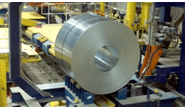
Domestic steel producers and the United Steelworkers (USW) union filed a barrage of trade cases last week. This is hardly news. Ever since the Commerce Department ruled that Vietnam is still treated as a nonmarket economy (NME) for antidumping purposes, many in the business expected new cases on the product that Vietnam excels at—“corrosion-resistant steel.” Nor is it a surprise that these cases roped in nine countries in addition to Vietnam: Australia, Brazil, Canada, Mexico, the Netherlands, South Africa, Taiwan, Turkey, and the United Arab Emirates. All these countries rank in the top ten exporters of corrosion-resistant steel to the United States. These petitions are a broadside against coated flat-rolled steel imports.
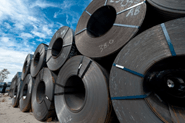
July represents the second-lowest monthly rate for steel imports so far this year.
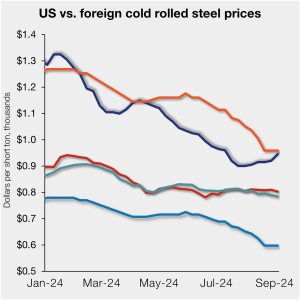
The price gap between US cold-rolled (CR) coil and offshore product has widened again. The premium has grown repeatedly since falling to a 10-month low in late July.
Sheet prices didn’t roar back after Labor Day. But steel market news sure came out of the gate strong (or maybe chaotically is the better way to put it). First, the nearly $15-billion proposed sale of U.S. Steel to Nippon Steel exploded into the news. And when I say exploded, I mean that all sides seem to be escalating things now.

US mills have filed or soon will file a sprawling trade petition against imports of coated flat-rolled steel from 10 countries. The petition seeks anti-dumping margins against Canada, Mexico, Brazil, the Netherlands, Turkey, the United Arab Emirates, Vietnam, Taiwan, Australia, and South Africa. It also seeks countervailing duty margins against Canada, Mexico, Brazil, and Vietnam. That’s according documents dated Sept. 5 and addressed to Commerce Secretary Gina Raimondo and International Trade Commission (ITC) Secretary Lisa Barton.
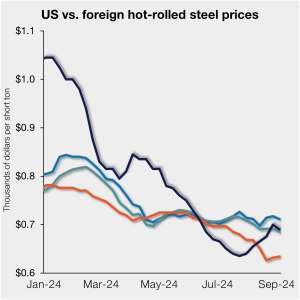
US hot-rolled (HR) coil prices were largely flat over the past week, remaining higher than tags for offshore material on a landed basis for a second consecutive week.